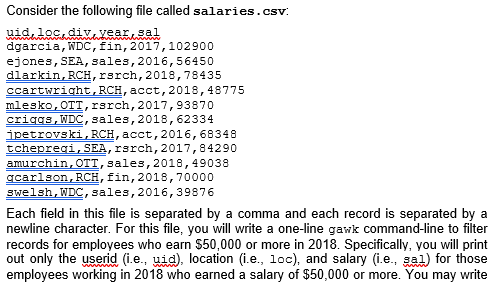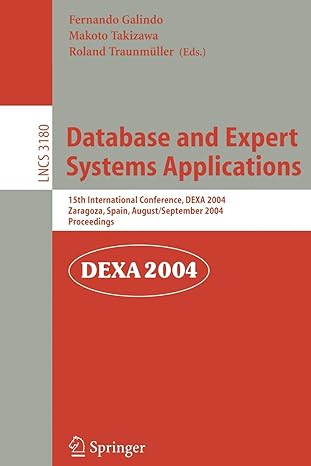Answered step by step
Verified Expert Solution
Question
1 Approved Answer
Consider the following file called salaries.csv. uid.loc,div,vear,sal dgarcia, WDC, fin, 2017,102900 ejones, SEA, sales,2016,56450 dlarkin,RCH,rsr ch, 2018,78435 cartwright,RCH, acct, 2018, 48775 mlesko,OTT, rsrch, 2017,93870 criggs,WDC,

Step by Step Solution
There are 3 Steps involved in it
Step: 1

Get Instant Access to Expert-Tailored Solutions
See step-by-step solutions with expert insights and AI powered tools for academic success
Step: 2

Step: 3

Ace Your Homework with AI
Get the answers you need in no time with our AI-driven, step-by-step assistance
Get Started


